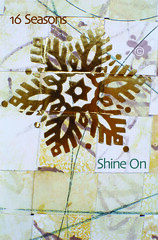
"Ok. We’ve heard loud and clear that you don’t like the new logo." — GAP Facebook
But it's hard to turn off online opinions. And GAP can expect to hear some more after its two-day escapade to introduce a logo that felt like it was served up straight out of an old clip art book.
Helvetica (because that is what everybody uses). And a tiny box behind the GAP (because someone wanted GAP to be, you know, outside the box).
“We’ve learned a lot in this process. And we are clear that we did not go about this in the right way," said Marka Hansen, president of Gap Brand North America. "We recognize that we missed the opportunity to engage with the online community. This wasn’t the right project at the right time for crowd sourcing."
But did they really? Hansen's statement alludes to the idea that they might try again. Just not today. And after the recent GAP debacle, probably not in the foreseeable future. Almost certainly not why Hansen holds the same position.
What Is It About Logos Anyway?
When a company has a readily identifiable brand, like GAP, the logo transcends art. It becomes the symbol of the brand relationship.
When that happens (and you want it to happen), you cannot change the logo any more successfully than you can surprise your spouse with a new wedding ring as the symbol of your relationship. This is especially true true if you trade it down, swapping out the gold band for a twizzler stick or tie wrap.
"Um honey, what's that wrapped around your finger?"
"Oh this? It's a garbage bag tie wrap."
"A what? ... Why?"
"I decided to evolve the symbol of our relationship to be more in line with our everyday down-to-earth domestic bliss."
See? If you think such a stunt would be well received, go ahead and try it.
 Of course, that is not to say refreshing a symbol is a bad idea. There are opportunities to evolve it, from time to time, with the mutual consent of both parties. Or, in the case of a company logo, many stakeholders. In some cases, it might not be all that different from deciding when to change a tagline.
Of course, that is not to say refreshing a symbol is a bad idea. There are opportunities to evolve it, from time to time, with the mutual consent of both parties. Or, in the case of a company logo, many stakeholders. In some cases, it might not be all that different from deciding when to change a tagline.When To Change A Logo.
At the end of the relationship. Mergers, acquisitions, and buyouts are all suitable times to change the logo because they represent a change in the relationship. However, marketers must always remember that a new symbol is indicative of change. New relationships have to be proven.
At the end of an era. Some logos, much like architecture, pay too much attention to trends and not the timelessness of their own design. In the 1980s, for example, many companies infused pastels into their designs. The evolution of Nike might be an appropriate example, especially because the changes were mostly subtle.
With a shift in direction. While the Syfy name change is still a mess, the timing was somewhat right. The network wanted to change direction. Whether it really did or not is debatable. (There were some other legal reasons involved too).
Because it sucks. Some companies have logos that suck. There are thousands and thousands. What else can be said about them? Marketers need to be careful though. Mercedes is sometimes called a bad logo design. Maybe so, but the iconic symbol has transcended what doesn't work.
New Products. New companies, new products, and new services can sometimes spark the imagination. Apple used this approach when it dropped the color bars. While the change wasn't as dramatic as the launch of Infiniti by Nissan, it's still a useful illustration.
Never. When a logo works, it works. And it doesn't have to be great to work. That is the lesson GAP ought to have learned. While the company might think the mark has become tied to the past, its customers are happy enough with it. And maybe that is the most important lesson of all. When it comes to logos, once established, it's no longer about you.
Related Stories By Others.
• What Did It Take To Get The Gap To Reverse Its Logo Redesign?
• Dear Gap, I Have Your New Logo.
• Calm Down, The New Gap Logo is a PR Stunt.

















